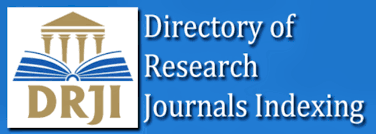Outlook threat at the future climate changes on livestock resources
DOI:
https://doi.org/10.30574/gscarr.2022.10.1.0305Keywords:
Future climate changes, Livestock, Heat stress, Global warming potential, Greenhouses gasAbstract
Food availability is the most important issue that takes the priority places in the policies of all countries all over the world. Recently, more attention has been paid to livestock because of their ability to produce meat and milk, as well as it has a significant source of income for small holders and an economic contributor to the gross domestic product. Climate changes induced physiological stress, which is one of the complex factors making livestock management and husbandry challenging in many geographical locations in the world. Increased body temperature or heat stress will cause production losses in livestock and impact on their ability to maintain normal function. There is considerable research evidence that showed significant decline in animal performance when subjected to heat stress. Heat stress inflicts heavy economic losses on livestock production. The effects of heat stress is evident in feed consumption, production efficiency in terms of milk yield or weight gain per unit of feed energy, growth rate, and reproductive efficiency. The aim of this article is to discuss increasing food production to ensure food security for nearly 8 billion people, without causing further environmental damage that can be achieved by transforming systems and adopting sustainable livestock practices within a changing climate.
Metrics
References
Hassane H. The Promotion of the Livestock Industry for Food Security in Africa and Arab countries. Arab/Africa- Economic Forum, Beyond Promises: Moving forward towards an effective Arab/Africa Partnership, Kuwait. 2013.
Henry B, Charmley E, Eckard R, Gaughan J, Hegarty R. Livestock production in a changing climate: Adaptation and mitigation research in Australia. Crop and Pasture Science. 2012; 63(3): 191-202.
Elasha BO. Mapping of Climate Change Threats and human Development Impacts in the Arab Region. UNDP –Arab. Human Development Report, Research paper series. 2010.
Rota A, Thieme O. The livestock challenge. Rural21, the International Journal for Rural Development. 2009; 43(6): 8-11.
FAO, World Bank. Farming Systems and Poverty. FAO and World Bank, Rome and Washington. 2001.
FAO. World Agriculture: Towards 2015/2030. An FAO perspective. Economic and Social Development Department. 2003.
FAO Website. Pro-Poor Livestock Policy Initiative.
Thornton PK, van de Steeg J, Notenbaert A, Herrero M. The impacts of climate change on livestock and livestock systems in developing countries: A review of what we know and what we need to know".Agricultural Systems. 2009; 101(3): 113–127.
Steinfeld H, Gerber P, Wassenaar T, Castel V, Rosales M, de Haan C. Livestock's long shadow: environmental issues and options (PDF). Food and Agriculture Organization of the UN. 2006.
World Bank, FAO, IFAD. Improving Food Security in Arab Countries. The World Bank, Washington DC.2009.
NASA. Features | October 9, 2019 The Atmosphere: Getting a Handle on Carbon Dioxide Sizing Up Humanity's Impacts on Earth's Changing Atmosphere. 2019.
David Slipher. The Other CO2 Problem, UC Davis College of Biological Sciences. 2019.
Amy Quinton. Study Examines Environmental Footprint of California Dairy Cows over 50 Years //UC Davis Researchers Find 50 Percent Reduction in Greenhouse Gases per Liter of Milk. 2020.
Frank Mitloehner, ErmiasKebreab, Michael Boccadoro. Methane, Cows, and Climate Change:California Dairy’s Path to Climate Neutrality. Clarity and Leadership for Environmental Awareness and Research Center University of California, Davis clear.ucdavis.edu. 2 nSeptember 2020.
Ocko IB. Control methane to slow global warming—fast .2021 .The international journal of science / 26 August. 2021; 596: 26.
Downloads
Published
How to Cite
Issue
Section
License

This work is licensed under a Creative Commons Attribution-NonCommercial-ShareAlike 4.0 International License.












